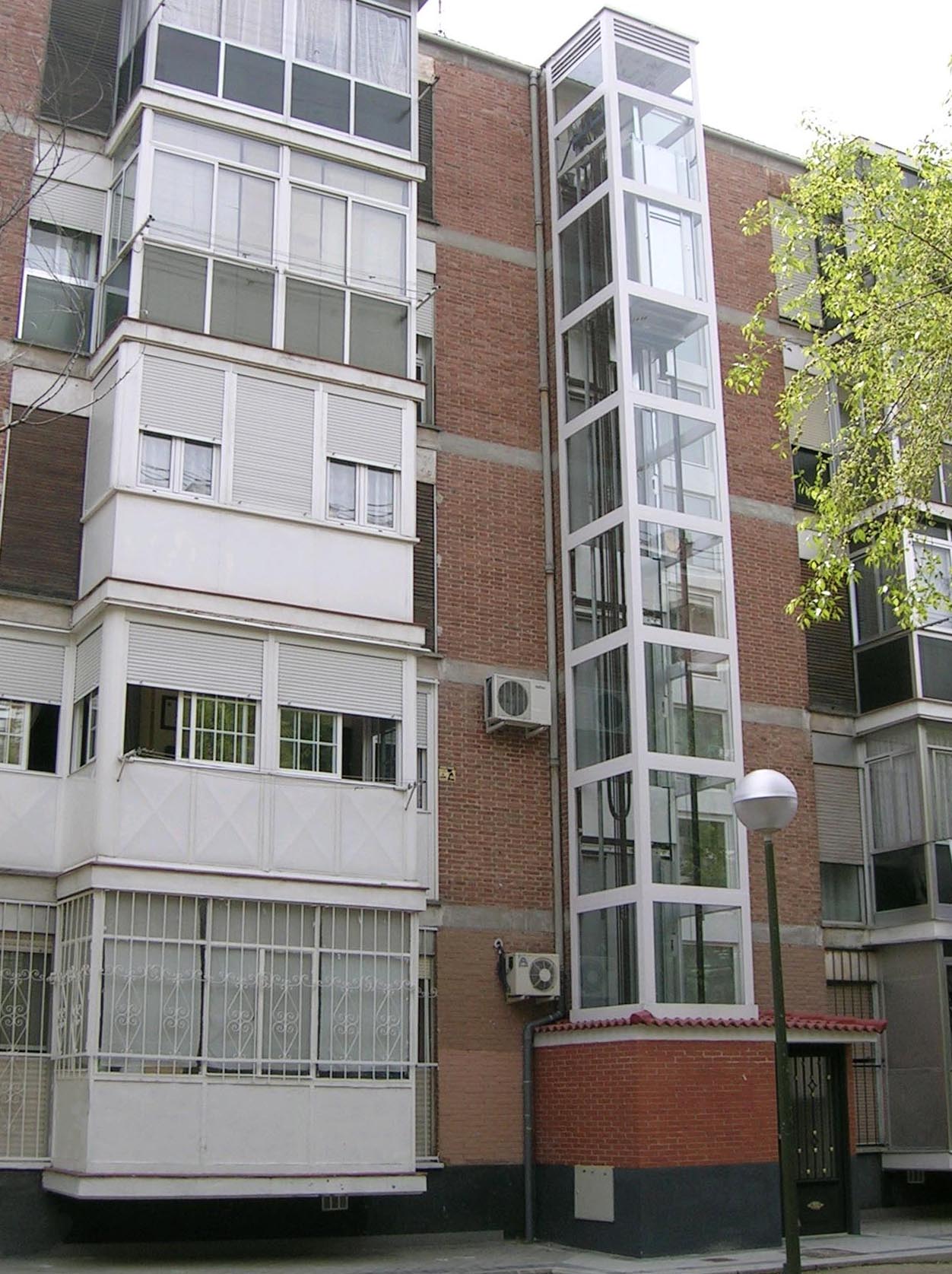Numerous neighborhoods of Madrid were built in the 1960s, coinciding with a time of expansion of the city. These neighborhoods, in their majority, were of residential character in which small green areas coexisted and great amount of blocks devoted to houses of five floors. All these buildings have many similarities in terms of construction (they have a central patio and terraces in each house), making the neighborhood in which they were located a purely residential.
At that time, few buildings in Madrid capital had elevators. Only some hotels and luxury flats of that time enjoyed such elevators. However, over the years, more new buildings were having this type of services in the complex itself, until reaching the present, where all urban developments have several lifts in each block of housing.
With the passage of time, the neighborhoods with buildings mostly built in the 60s, such as Hortaleza, San Blas, Villa de Vallecas or Tetuán, among others, still maintain the same population as 50 years ago. The families that moved to this new neighborhood are now elderly. This suggests a problem in terms of the accessibility of this group to their homes. In fact, the request of these people to the community of neighbors of the installation of elevators to access their apartments is becoming more frequent. Elevators are not installed in all cases. However, there is a growing tendency to install these in old homes.
This fact entails a series of problems, both technical and administrative, that the community of neighbors must resolve in the best possible way. In most cases, the biggest impediment was space. Having a limited interior patio and no more common spaces, it was difficult to find an effective location possible for the installation of elevators. However, the City Council, to promote the accessibility of the elderly to their homes, took the initiative.
In 2014, the City Council of Madrid initiated the processing of a new municipal ordinance. This municipal ordinance called Ordinance for the Installation of Elevators on the Facade of Constructed Buildings for Residential Use, contemplated the regularization of the so-called “tower elevators” in dwellings of a certain age.
But, what are tower elevators? Tower elevators are those lifts attached to the façade of residential dwellings that occupy part of the adjoining public space. The installation of these elevators must meet certain requirements that are contemplated in the municipal ordinance and that are the following:
– They can only occupy green areas or adjacent public roads.
– There is no other technical solution to solve this accessibility problem.
– It should not affect the operation of other urban services.
– 1.50-1.20 m minimum width of passage must be respected.
Through this new solution, the communities of neighbors now have a real solution to the problem of space, which is the occupation of public space, upon request to the Consistory.
Let’s see now a series of examples that have occurred in the area of Ascao – La Elipa, in the west of the capital.
In the first image you can see the construction of an elevator tower attached to the facade of the building. The construction of this elevator has been resolved by occupying part of the public parking line and, through a passageway, the invasion of the sidewalk has been avoided, allowing the free movement of pedestrians through it.

Photo 1: Tower elevator in the neighborhood of La Elipa
The second image shows the construction of a second tower lift attached to the façade, this time in the neighborhood of Ascao. In this case, the construction of the elevator invades the road. When it was invaded, it was decided to break the curb route and occupy the public parking line to allow pedestrians to pass.
It has been appreciated that the construction of the tower elevators breaks the normality of the public road. Not being initially planned in the urban development of the neighborhood, the tower elevator is a new element that has tried to blend in with the environment in the best possible way.
However, if we compare the two photos of the different elevators, it is clear that the elevator in photo 1 is a good solution from the urban point of view. Its implementation in the urban environment allows the passage of pedestrians for its original itinerary and only occupies one square of the public parking line. In addition, it has the same textures as the set of the building, mimicking the environment. In the case of the elevator in photo 2, you can see how the installation of the attached lift acts as an architectural barrier to the passage of pedestrians along the sidewalk, not allowing the passage through its original route and creating a bend that pedestrians must travel. In addition, part of the public parking line is occupied and its fit with the rest of the facade has not been correctly resolved, resulting in an unattractive block in the middle of the sidewalk.
As a conclusion, the installation of the elevators attached to the facade or tower elevators is an urban solution to a social problem. With the regulation of this type of construction, greater accessibility is achieved for the elderly and their quality of life is improved. Said solution, in addition, must meet a minimum of aesthetics and utility, not harming the daily life of the environment that surrounds it.
David Carmona. Master ICCP student. UPM.
